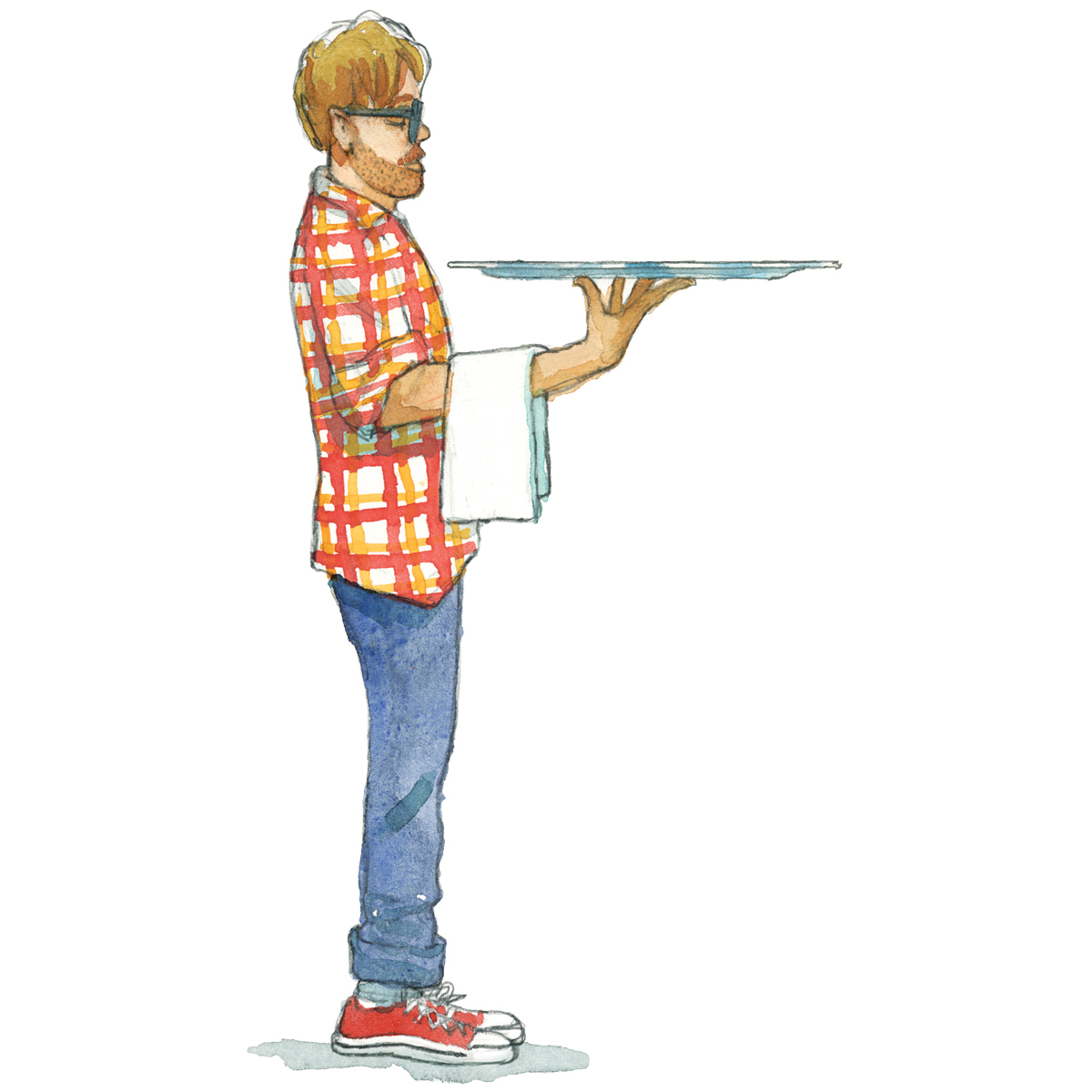The Casual Conundrum: Why ‘Casual’ Doesn’t Mean ‘Cheap’

Illustration by Steven Stankiewicz
Unless you’ve been living under a rock on a spotlighted pedestal in the lobby of the Mandarin Oriental, you’ve probably noticed Boston’s diningscape trending casual. Unlike in the early aughts—when restaurants du jour skewed white-tablecloth, glitzy, and vaguely European—today’s hot spots tend to be of the Ribelle, Sarma, and Kirkland variety, characterized by a laid-back vibe, plaid- and chambray-clad servers, and deceptively simple food.
By and large, this shift has been a blessing, freeing chefs to focus on flavor and ingredients rather than plate tectonics. It also acknowledges the growing reality that while a celebratory splurge might call for the tasting menu at L’Espalier, it just as likely may mean sharing a beautifully marbled rib-eye and a non-entry-level bottle of red atop a pair of barstools.
The downside: Once you separate said splurge from its fancy trappings, many diners get flummoxed by the financial disconnect. How can this simple-looking plate of roast chicken—in this unassuming room—cost nearly as much as a meal at one of those fancypants joints? It’s as if customers feel they’re somehow getting hoodwinked, but can’t quite put their finger on it.
Which doesn’t mean they don’t try. “The food menu is laughable, $21 for [an] entree of spätzle…are you friggin’ kidding me? It’s $3.99 at Karl’s Sausage Kitchen for a side,” noted a Yelper about Bronwyn chef Tim Wiechmann’s Teutonic tavern in Union Square. It’s particularly an issue in the face of high-end iterations of typically cheapo fare. “Please. There’s a reason [barbecue] usually sells for so little—because it’s cheap to make! No need to gouge your customers just because the owner was on Top Chef,” whined another Yelper about Sweet Cheeks in the Fenway. Though it’s too early to tell, I can only imagine the level of venom Kendall Square’s fab new State Park, with its pinball machines, plywood walls, and magnums-only wine list, will elicit from befuddled first-timers.
Admittedly, value is an intensely personal concept. One man’s lavish feast is another’s weeknight snack. But oft overlooked is that dialed-back optics don’t mean quality or craftsmanship has receded, or that restaurant buildouts suddenly became cheaper—or purveyors less expensive. Wiechmann’s glorious noodles are made in house with premium ingredients, while Tiffani Faison splurges for Berkshire pork, hormone-free beef, and staffers who can parse Sweet Cheeks’ stellar whiskey list.
To be fair, diners clinging to old paradigms aren’t the sole culprits. Chefs and their publicists do shoulder some blame for exaggerating the modesty of the pricing. (Yes, in a perfect world, diners would eat at your destination bistro disguised as Anchovies four nights a week.) But I’d argue that vilification is an overkill response to, uh, “optimistic spin.” Not to mention that if mercurial neighborhood associations stopped treating restaurant pitch hearings as line-item-veto sessions—or opportunities to extract birdbaths and other graft—perhaps restaurateurs would be a little more forthcoming about price point and ambition from the outset.
So the next time you’re caught off-guard by a hefty bill in a low-key place, why not chalk it up to experience? Give it another shot when you’re feeling flush. With luck, it’ll end up being your favorite date-night splurge, no jacket required.


